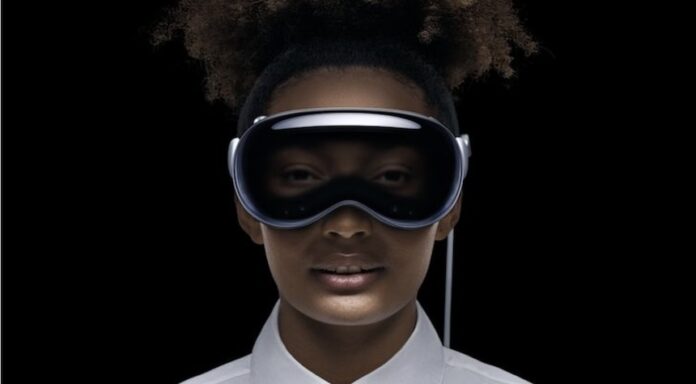Apple Vision Pro may be the most impressive piece of hardware that you can wear on your face. The question of who would pay $3,499 for such a device (and possibly more to cover extras like storage) was left unanswered by the company during its 2023 Worldwide Developer Conference keynote on Monday.
When a company enters the market with a new product category, it must ask and answer two questions: What is it and for whom is it intended?
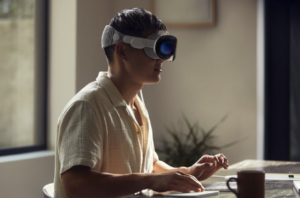
I’ll answer your first question. We’ll get to the second one in a minute.
What is the Vision Pro? The Vision Pro will be available “early next” year. It’s an augmented-reality headset that runs a new operating software called visionOS. Wearers can work and play within an environment Apple calls “spatial Computing”. They see an interface similar to the one on their smartphone, but in photorealistic 3-D, and they hover in simulated reality space. The environment is visible, but so are the widgets and data that you use. In this augmented reality, the computer works by using simple finger gestures and your eyes to select choices. This is similar to how you would use multitouch with a smartphone.
One of the Vision Pro’s motion-detection cameras is aimed down, so you can move your fingers discretely rather than waving them around in the air as Tom Cruise did in Minority Report. No gloves are needed.
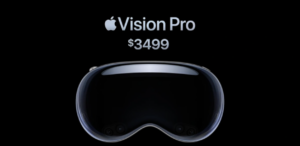
The headset is packed with hardware, including an M2 laptop processor, multiple cameras, LIDAR sensors, and enough graphics power to move 23,000,000 OLED pixels on stereoscopic displays at a fast refresh rate. Dolby Atmos surround sound speakers provide the audio experience. A soft, sock-like head strap holds the face computer in position.
The power cable is attached behind the left ear of the wearer to a battery pack which should provide two hours of mobile usage. A power brick will be needed for all-day usage.
The ability to select the level of augmented reality you will see is perhaps the most useful feature. You can adjust how much real-world content you want to see or block using a digital crown on the right temple. A passthrough mode, called EyeSight, allows you to be seen by people around you, but as if you were wearing darkened goggles.
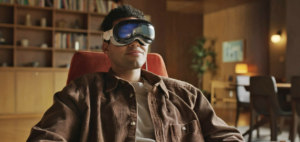
This brings us to the rub.
Joanna Stern of the Wall Street Journal, who wore a Vision Pro as part of a WWDC demonstration yesterday, wrote that after trying it, “Maybe an office is better with a face-computer.” But since people are moving back to the traditional office after COVID why bother? Why not use a MacBook instead, which has a 15-hour battery life and is cheaper?
You’d better have a marketing strategy that is on par with the pro-level hardware. (Apple’s price of $3,499 matches other pro-level products like Magic Leap and Microsoft). Instead, the Cupertino computing-and-electronics giant mostly shows users using Vision Pro to do consumer-level activities. The users are watching movies outdoors on a virtual IMAX screen, making a FaceTime call to their purple-haired Aunt, editing 3D pictures with goggles, or playing 3D video games.
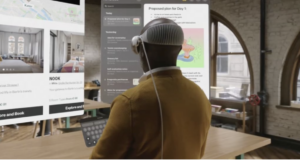
Apple’s Vision page shows a professional office user using VisionOS applications that are not very different from the macOS versions, but just larger and floating.
What benefits can I expect if, for instance, I am a video editor that lives and breathes Apple’s Final Cut? This question has not been answered convincingly by the company. They’d better have a compelling answer for $3,499 before Vision Pro is sold.
I am reminded of the Apple Watch. It was only a success when Cupertino figured out exactly what it was. The marketing and first two generations of the watchOS OS positioned the device as a communications device that could do everything. Apple’s watchOS OS sold reasonably well, but it didn’t take off until they tailored their marketing and OS to reflect the way users actually used the device: as a stylish, well-designed fitness and reminders device.
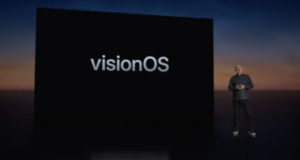
Apple doesn’t seem to know how users will use Vision Pro, as the mismatch in the hardware and early marketing proves.
Apple’s “Pro” moniker also indicates that it intends to release in the future a version with less powerful hardware and a lower price. The headset’s section on the company website is simply titled “Vision.”
Apple will have a big hit when they release the plain Vision, or even better, a super lightweight Vision Air, at a price that’s not much more than their MacBook Air bestseller.
I think Vision Pro will be limited until then or until its price matches the use cases of the Pro.

